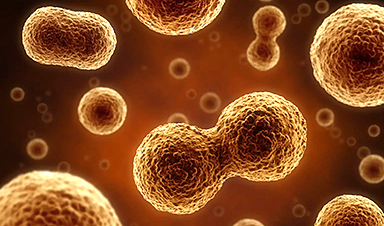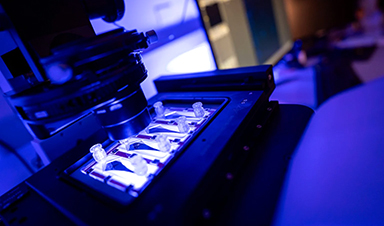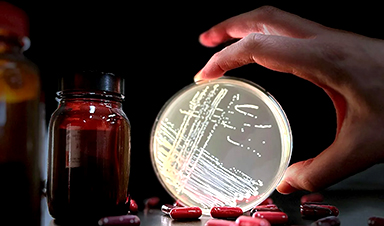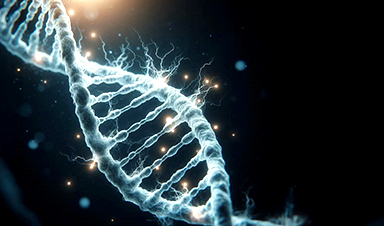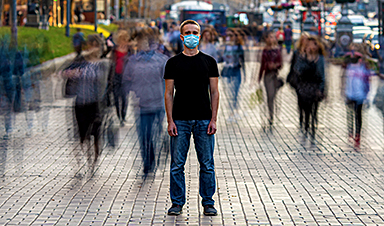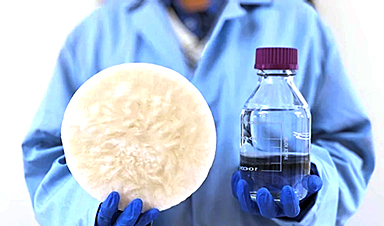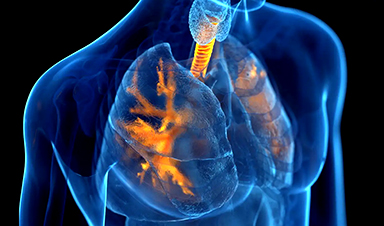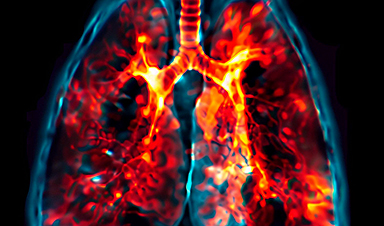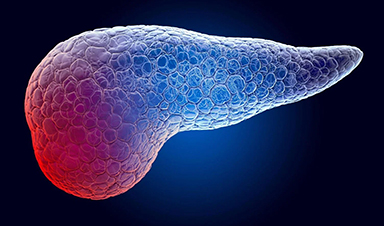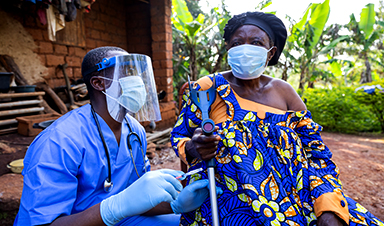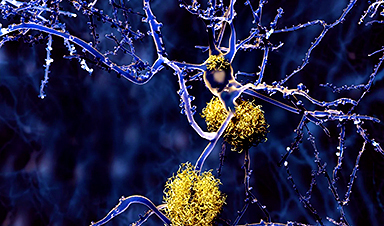A new approach to image analysis has uncovered how cancer cells manipulate their size as a means of resisting treatment.
Researchers have discovered that cancer cells are capable of either shrinking or super-size themselves in order to survive challenges within their environment, such as drug treatment.
By combining biochemical profiling technologies with mathematical analyses, scientists from The Institute of Cancer Research in London were able to uncover the mechanisms by which genetic changes can result in variations in the size of cancer cells. These findings may be utilized in the development of novel treatments.
The researchers believe smaller cells could be more vulnerable to DNA-damaging agents like chemotherapy combined with targeted drugs, while larger cancer cells might respond better to immunotherapy.
The skin cancer melanoma is driven by two different genetic mutations – 60 percent of cases are caused by a BRAF gene mutation, while 20 to 30 percent of cases are caused by an NRAS mutation.
The researchers set out to investigate the differences in size and shape of skin cancer cells harboring the two mutations, by using mathematical algorithms to analyze huge amounts of data on DNA and proteins.
The major difference was cell size. BRAF-mutant cancer cells were very small whereas NRAS-mutant cancer cells were much bigger. Drug-resistant NRAS cells were even bigger.
Smaller cells appear to be able to tolerate higher levels of DNA damage, as they are very concentrated with proteins that repair DNA – like PARP, BRCA1, or ATM1 proteins.
The ICR researchers believe that this could make them more vulnerable to drugs like PARP inhibitors – drugs blocking proteins responsible for repairing DNA damage – especially when combined with DNA-damaging agents such as chemotherapy.
In contrast, the larger NRAS-mutant cancer cells contained damage to their DNA instead of repairing it, accumulating mutations, and enlarging. These larger cells were not as reliant on DNA repair machinery, so using chemotherapy and PARP inhibitors against them might not be as effective.
Scientists believe larger cells could be more responsive to immunotherapy – because their larger number of mutations could make them look more alien to the body. They are already exploring this theory with further studies.
The researchers believe BRAF and NRAS mutations may be driving the differences in cell size by regulating levels of a protein known as CCND1 – which is involved in cell division, growth, and maintaining the cytoskeleton – and its interactions with other proteins.
While the study focused on skin cancer cells, researchers suspect that this size-shifting ability and its impact on treatment response is common to multiple cancer types. They have already identified similar mechanisms in breast cancer and are now investigating whether the findings could apply to head and neck cancers.
The discovery provides new insight into how the size of cancer cells affects the overall disease, allowing for better predictions of how people with cancer will respond to different treatments simply by analyzing cell size.
Existing drugs could even be used to force cancer cells into a desired size prior to treatments like immunotherapy or radiotherapy, which could improve their effectiveness.
Study leader Professor Chris Bakal, Professor of Cancer Morphodynamics at The Institute of Cancer Research, London, said: “We think of cancer as out of control and unpredictable, but we used image analysis and proteomics to show for the first time that certain genetic and protein changes lead to a controlled change in the size of cancer cells. Cancer cells can shrink or grow to enhance their ability to repair or contain DNA damage, and that in turn can make them resistant to certain treatments.
He continues, “We think our research has real diagnostic potential. By looking at cell size, pathologists could predict whether a drug will work, or if the cells will be resistant. In the future, it might even be possible to use AI to help guide the pathologist, by making a rapid assessment about the size of cells and so the treatments that are most likely to work. We also hope our discovery will lead to new treatment strategies – for example creating drugs to target the proteins that regulate cell size.”
Professor Kristian Helin, Chief Executive of The Institute of Cancer Research, London, said: “This intriguing, fundamental study provides a correlation between genetic alterations in skin cancer cells and cell size. It opens the potential of using genetic alterations and cell size as biomarkers for how skin cancer will respond to treatments. It’s particularly exciting that cell size could also be an important biomarker for how other cancers, such as breast or head and neck cancers, respond to treatments.”
News
Tumor “Stickiness” – Scientists Develop Potential New Way To Predict Cancer’s Spread
UC San Diego researchers have developed a device that predicts breast cancer aggressiveness by measuring tumor cell adhesion. Weakly adherent cells indicate a higher risk of metastasis, especially in early-stage DCIS. This innovation could [...]
Scientists Just Watched Atoms Move for the First Time Using AI
Scientists have developed a groundbreaking AI-driven technique that reveals the hidden movements of nanoparticles, essential in materials science, pharmaceuticals, and electronics. By integrating artificial intelligence with electron microscopy, researchers can now visualize atomic-level changes that were [...]
Scientists Sound Alarm: “Safe” Antibiotic Has Led to an Almost Untreatable Superbug
A recent study reveals that an antibiotic used for liver disease patients may increase their risk of contracting a dangerous superbug. An international team of researchers has discovered that rifaximin, a commonly prescribed antibiotic [...]
Scientists Discover Natural Compound That Stops Cancer Progression
A discovery led by OHSU was made possible by years of study conducted by University of Portland undergraduates. Scientists have discovered a natural compound that can halt a key process involved in the progression [...]
Scientists Just Discovered an RNA That Repairs DNA Damage – And It’s a Game-Changer
Our DNA is constantly under threat — from cell division errors to external factors like sunlight and smoking. Fortunately, cells have intricate repair mechanisms to counteract this damage. Scientists have uncovered a surprising role played by [...]
What Scientists Just Discovered About COVID-19’s Hidden Death Toll
COVID-19 didn’t just claim lives directly—it reshaped mortality patterns worldwide. A major international study found that life expectancy plummeted across most of the 24 analyzed countries, with additional deaths from cardiovascular disease, substance abuse, and mental [...]
Self-Propelled Nanoparticles Improve Immunotherapy for Non-Invasive Bladder Cancer
A study led by Pohang University of Science and Technology (POSTECH) and the Institute for Bioengineering of Catalonia (IBEC) in South Korea details the creation of urea-powered nanomotors that enhance immunotherapy for bladder cancer. The nanomotors [...]
Scientists Develop New System That Produces Drinking Water From Thin Air
UT Austin researchers have developed a biodegradable, biomass-based hydrogel that efficiently extracts drinkable water from the air, offering a scalable, sustainable solution for water access in off-grid communities, emergency relief, and agriculture. Discarded food [...]
AI Unveils Hidden Nanoparticles – A Breakthrough in Early Disease Detection
Deep Nanometry (DNM) is an innovative technique combining high-speed optical detection with AI-driven noise reduction, allowing researchers to find rare nanoparticles like extracellular vesicles (EVs). Since EVs play a role in disease detection, DNM [...]
Inhalable nanoparticles could help treat chronic lung disease
Nanoparticles designed to release antibiotics deep inside the lungs reduced inflammation and improved lung function in mice with symptoms of chronic obstructive pulmonary disease By Grace Wade Delivering medication to the lungs with inhalable nanoparticles [...]
New MRI Study Uncovers Hidden Lung Abnormalities in Children With Long COVID
Long COVID is more than just lingering symptoms—it may have a hidden biological basis that standard medical tests fail to detect. A groundbreaking study using advanced MRI technology has uncovered significant lung abnormalities in [...]
AI Struggles with Abstract Thought: Study Reveals GPT-4’s Limits
While GPT-4 performs well in structured reasoning tasks, a new study shows that its ability to adapt to variations is weak—suggesting AI still lacks true abstract understanding and flexibility in decision-making. Artificial Intelligence (AI), [...]
Turning Off Nerve Signals: Scientists Develop Promising New Pancreatic Cancer Treatment
Pancreatic cancer reprograms nerve cells to fuel its growth, but blocking these connections can shrink tumors and boost treatment effectiveness. Pancreatic cancer is closely linked to the nervous system, according to researchers from the [...]
New human antibody shows promise for Ebola virus treatment
New research led by scientists at La Jolla Institute for Immunology (LJI) reveals the workings of a human antibody called mAb 3A6, which may prove to be an important component for Ebola virus therapeutics. [...]
Early Alzheimer’s Detection Test – Years Before Symptoms Appear
A new biomarker test can detect early-stage tau protein clumping up to a decade before it appears on brain scans, improving early Alzheimer’s diagnosis. Unlike amyloid-beta, tau neurofibrillary tangles are directly linked to cognitive decline. Years [...]
New mpox variant can spread rapidly across borders
International researchers, including from DTU National Food Institute, warn that the ongoing mpox outbreak in the Democratic Republic of the Congo (DRC) has the potential to spread across borders more rapidly. The mpox virus [...]
